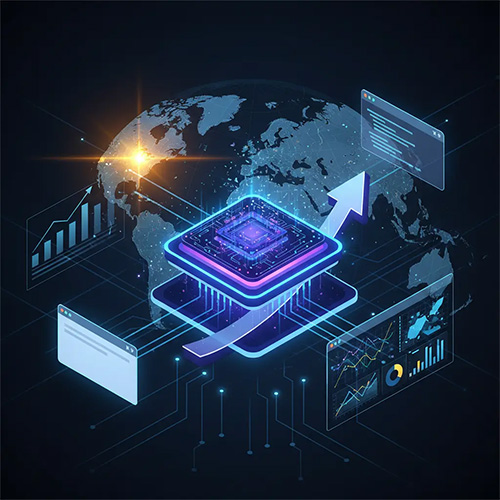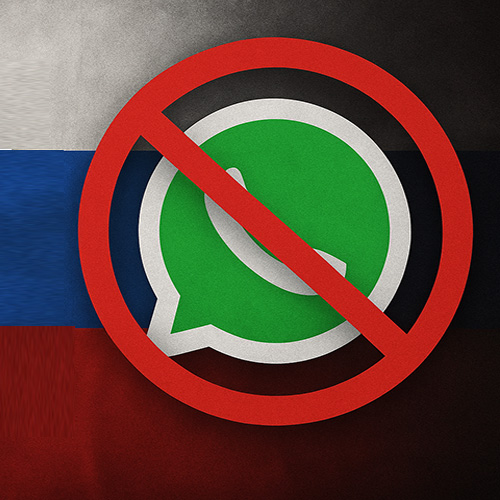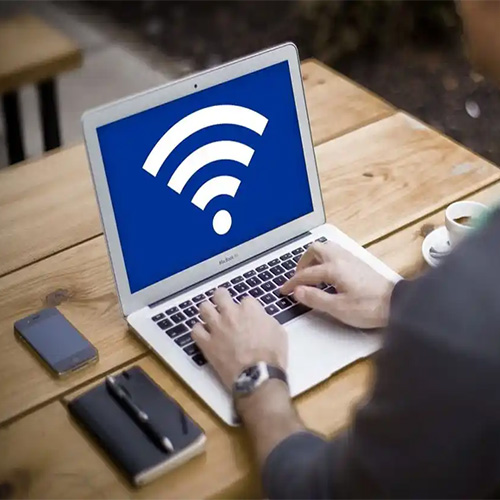New Arrival

The internet of things is set to revolutionize how people stay connected and do things faster on the move. Indian enterprises have realized the potential of mobile technology as a business enabler and the year 2014 witnessed a clear move towards the usage of employee owned devices in the workplace. In India, the millennial generation is spearheading IT consumerization at the workplace. Rapid smartphone penetration coupled with broadband and mobile internet, is enabling enterprises to improve employee productivity. Rahul Agarwal, Executive Director, Commercial Business said, “As we usher in the New Year, I expect remarkable shifts in enterprise computing devices, data and device management strategies and delivery of business solutions.”
Mobile devices will be at the core of data consumption and business sign-off processes
Devices have undergone a drastic transformation over the years, and the coming year will witness a spur of innovation in the enterprise computing segment. Among power users, mobile devices are becoming the interfaces of choice for reviewing documents, email sign offs and consumption of digital content, and they allow users to access work from any location. While, most users will use their smartphones for accessing e-mail and basic enterprise apps, organizations will provide tablets for power users, and in some verticals such as banking, healthcare and education tablet adoption will be higher. From an employer purview, Windows 10 will also drive tablet adoption as it will offer a more seamless experience across the Windows family of devices. We anticipate that at least 20% employees of most large Indian enterprises will have tablets provided by their employers in 2015. That said, PCs will remain the primary computing devices in the workplace as it is the most preferred device for content creation and many enterprises are yet to have an infrastructure to support mobile devices, due to lack of connectivity and application compatibility concerns. For executive members, convertibles (laptop that can be used a tablet) are likely to gain traction, but their adoption will be limited due to a higher price point. We are anticipating a move towards newer form factors such as mini PCs and AIOs, which will replace older PCs as majority of enterprises are shifting to devices that save real estate space and increase refresh cycle
The emergence of enterprise cloud storage and real-time data analytics with mobility solutions.
[caption id="attachment_1471086" align="aligncenter" width="600"] Rahul Agarwal-Executive Director, Commerical Business Segment, Lenovo India[/caption]
As employees increasingly start using multiple devices to access enterprise data from remote locations, data management and delivery of business solutions become a daunting task for IT. In addition to that, there is complexity of data sharing among employees, customers and partners. Trends such as enterprise mobility and bring your own device (BYOD) are raising data vulnerability concerns and there is a strong need to resolve these issues and comply with regulatory requirements. To help IT regain control over file storage and sharing, more organizations will implement an enterprise-class, IT-managed data management solution which offers IT the ability to control sensitive corporate data while meeting the mobility and collaboration needs of users. As cloud solutions become more mainstream, enterprises will leverage the benefits of real time data tracking and analytics, which have significant rewards in sectors like retail manufacturing and BFSI. From better inventory management, sales monitoring, CRM service delivery to increasing footfalls in retail outlets, live data analytics can be a huge asset for Indian companies which can transform the way an industry operates. Apart from data, the majority of Indian organizations will move their mission critical apps and business solutions to cloud in the next two years. According to a recent Gartner survey, 85 percent of software vendors are first writing applications for the web. This is a big shift from the days when applications were developed as traditional or “on-premise apps”. Cloud significantly reduces infrastructure cost, and offers pay-as-you-grow model which is ideal for small and medium businesses in India
MDM will become a must-have standard in enterprises with more than 200 employees
Today’s focus around enterprise mobility is on BYOD or CYOD, and data breaches and leakage from mobile devices are at the top of the list of security concerns for many IT managers. To prevent this MDM is emerging as a preferred solution among Indian companies. In line with this, many corporations have begun to look beyond Mobile Device Management (MDM) to Enterprise Mobility Management (EMM) applications as a way of solving some of the hurdles to adoption with limited success, and enable data and configuration settings for all types of mobile devices, secure intranet access, over-the-air application updates, SMS based commands, and standard VPN access from any device. Organizations need an end-to-end solution that addresses, user requirements while also meeting IT’s security and management imperatives. While policies, procedures and tools are critical to effective security, the right mix of devices and an effective device management strategy play a key role in minimizing the potential for security breaches and easing the manageability burden on IT. Thus, we expect the majority of Indian companies will look at a holistic offering, which offers an end-to-end management of devices, apps, content and ensures enterprise grade security.
Adoption of technology is co-dependent on its usability, effectiveness and return on investment. As more Indian organizations continue to leverage technology, workplace will become more aspirational, creating better work-life balance for employees and ideal for business innovation. These above mentioned trends are so intertwined into business drivers, they will create a dynamic workspace empowering employees and customers to be more agile, while unlocking new business opportunities.
Rahul Agarwal-Executive Director, Commerical Business Segment, Lenovo India[/caption]
As employees increasingly start using multiple devices to access enterprise data from remote locations, data management and delivery of business solutions become a daunting task for IT. In addition to that, there is complexity of data sharing among employees, customers and partners. Trends such as enterprise mobility and bring your own device (BYOD) are raising data vulnerability concerns and there is a strong need to resolve these issues and comply with regulatory requirements. To help IT regain control over file storage and sharing, more organizations will implement an enterprise-class, IT-managed data management solution which offers IT the ability to control sensitive corporate data while meeting the mobility and collaboration needs of users. As cloud solutions become more mainstream, enterprises will leverage the benefits of real time data tracking and analytics, which have significant rewards in sectors like retail manufacturing and BFSI. From better inventory management, sales monitoring, CRM service delivery to increasing footfalls in retail outlets, live data analytics can be a huge asset for Indian companies which can transform the way an industry operates. Apart from data, the majority of Indian organizations will move their mission critical apps and business solutions to cloud in the next two years. According to a recent Gartner survey, 85 percent of software vendors are first writing applications for the web. This is a big shift from the days when applications were developed as traditional or “on-premise apps”. Cloud significantly reduces infrastructure cost, and offers pay-as-you-grow model which is ideal for small and medium businesses in India
MDM will become a must-have standard in enterprises with more than 200 employees
Today’s focus around enterprise mobility is on BYOD or CYOD, and data breaches and leakage from mobile devices are at the top of the list of security concerns for many IT managers. To prevent this MDM is emerging as a preferred solution among Indian companies. In line with this, many corporations have begun to look beyond Mobile Device Management (MDM) to Enterprise Mobility Management (EMM) applications as a way of solving some of the hurdles to adoption with limited success, and enable data and configuration settings for all types of mobile devices, secure intranet access, over-the-air application updates, SMS based commands, and standard VPN access from any device. Organizations need an end-to-end solution that addresses, user requirements while also meeting IT’s security and management imperatives. While policies, procedures and tools are critical to effective security, the right mix of devices and an effective device management strategy play a key role in minimizing the potential for security breaches and easing the manageability burden on IT. Thus, we expect the majority of Indian companies will look at a holistic offering, which offers an end-to-end management of devices, apps, content and ensures enterprise grade security.
Adoption of technology is co-dependent on its usability, effectiveness and return on investment. As more Indian organizations continue to leverage technology, workplace will become more aspirational, creating better work-life balance for employees and ideal for business innovation. These above mentioned trends are so intertwined into business drivers, they will create a dynamic workspace empowering employees and customers to be more agile, while unlocking new business opportunities.
 Rahul Agarwal-Executive Director, Commerical Business Segment, Lenovo India[/caption]
As employees increasingly start using multiple devices to access enterprise data from remote locations, data management and delivery of business solutions become a daunting task for IT. In addition to that, there is complexity of data sharing among employees, customers and partners. Trends such as enterprise mobility and bring your own device (BYOD) are raising data vulnerability concerns and there is a strong need to resolve these issues and comply with regulatory requirements. To help IT regain control over file storage and sharing, more organizations will implement an enterprise-class, IT-managed data management solution which offers IT the ability to control sensitive corporate data while meeting the mobility and collaboration needs of users. As cloud solutions become more mainstream, enterprises will leverage the benefits of real time data tracking and analytics, which have significant rewards in sectors like retail manufacturing and BFSI. From better inventory management, sales monitoring, CRM service delivery to increasing footfalls in retail outlets, live data analytics can be a huge asset for Indian companies which can transform the way an industry operates. Apart from data, the majority of Indian organizations will move their mission critical apps and business solutions to cloud in the next two years. According to a recent Gartner survey, 85 percent of software vendors are first writing applications for the web. This is a big shift from the days when applications were developed as traditional or “on-premise apps”. Cloud significantly reduces infrastructure cost, and offers pay-as-you-grow model which is ideal for small and medium businesses in India
MDM will become a must-have standard in enterprises with more than 200 employees
Today’s focus around enterprise mobility is on BYOD or CYOD, and data breaches and leakage from mobile devices are at the top of the list of security concerns for many IT managers. To prevent this MDM is emerging as a preferred solution among Indian companies. In line with this, many corporations have begun to look beyond Mobile Device Management (MDM) to Enterprise Mobility Management (EMM) applications as a way of solving some of the hurdles to adoption with limited success, and enable data and configuration settings for all types of mobile devices, secure intranet access, over-the-air application updates, SMS based commands, and standard VPN access from any device. Organizations need an end-to-end solution that addresses, user requirements while also meeting IT’s security and management imperatives. While policies, procedures and tools are critical to effective security, the right mix of devices and an effective device management strategy play a key role in minimizing the potential for security breaches and easing the manageability burden on IT. Thus, we expect the majority of Indian companies will look at a holistic offering, which offers an end-to-end management of devices, apps, content and ensures enterprise grade security.
Adoption of technology is co-dependent on its usability, effectiveness and return on investment. As more Indian organizations continue to leverage technology, workplace will become more aspirational, creating better work-life balance for employees and ideal for business innovation. These above mentioned trends are so intertwined into business drivers, they will create a dynamic workspace empowering employees and customers to be more agile, while unlocking new business opportunities.
Rahul Agarwal-Executive Director, Commerical Business Segment, Lenovo India[/caption]
As employees increasingly start using multiple devices to access enterprise data from remote locations, data management and delivery of business solutions become a daunting task for IT. In addition to that, there is complexity of data sharing among employees, customers and partners. Trends such as enterprise mobility and bring your own device (BYOD) are raising data vulnerability concerns and there is a strong need to resolve these issues and comply with regulatory requirements. To help IT regain control over file storage and sharing, more organizations will implement an enterprise-class, IT-managed data management solution which offers IT the ability to control sensitive corporate data while meeting the mobility and collaboration needs of users. As cloud solutions become more mainstream, enterprises will leverage the benefits of real time data tracking and analytics, which have significant rewards in sectors like retail manufacturing and BFSI. From better inventory management, sales monitoring, CRM service delivery to increasing footfalls in retail outlets, live data analytics can be a huge asset for Indian companies which can transform the way an industry operates. Apart from data, the majority of Indian organizations will move their mission critical apps and business solutions to cloud in the next two years. According to a recent Gartner survey, 85 percent of software vendors are first writing applications for the web. This is a big shift from the days when applications were developed as traditional or “on-premise apps”. Cloud significantly reduces infrastructure cost, and offers pay-as-you-grow model which is ideal for small and medium businesses in India
MDM will become a must-have standard in enterprises with more than 200 employees
Today’s focus around enterprise mobility is on BYOD or CYOD, and data breaches and leakage from mobile devices are at the top of the list of security concerns for many IT managers. To prevent this MDM is emerging as a preferred solution among Indian companies. In line with this, many corporations have begun to look beyond Mobile Device Management (MDM) to Enterprise Mobility Management (EMM) applications as a way of solving some of the hurdles to adoption with limited success, and enable data and configuration settings for all types of mobile devices, secure intranet access, over-the-air application updates, SMS based commands, and standard VPN access from any device. Organizations need an end-to-end solution that addresses, user requirements while also meeting IT’s security and management imperatives. While policies, procedures and tools are critical to effective security, the right mix of devices and an effective device management strategy play a key role in minimizing the potential for security breaches and easing the manageability burden on IT. Thus, we expect the majority of Indian companies will look at a holistic offering, which offers an end-to-end management of devices, apps, content and ensures enterprise grade security.
Adoption of technology is co-dependent on its usability, effectiveness and return on investment. As more Indian organizations continue to leverage technology, workplace will become more aspirational, creating better work-life balance for employees and ideal for business innovation. These above mentioned trends are so intertwined into business drivers, they will create a dynamic workspace empowering employees and customers to be more agile, while unlocking new business opportunities.
See What’s Next in Tech With the Fast Forward Newsletter
SECURITY
Tweets From @varindiamag
Nothing to see here - yet
When they Tweet, their Tweets will show up here.





























